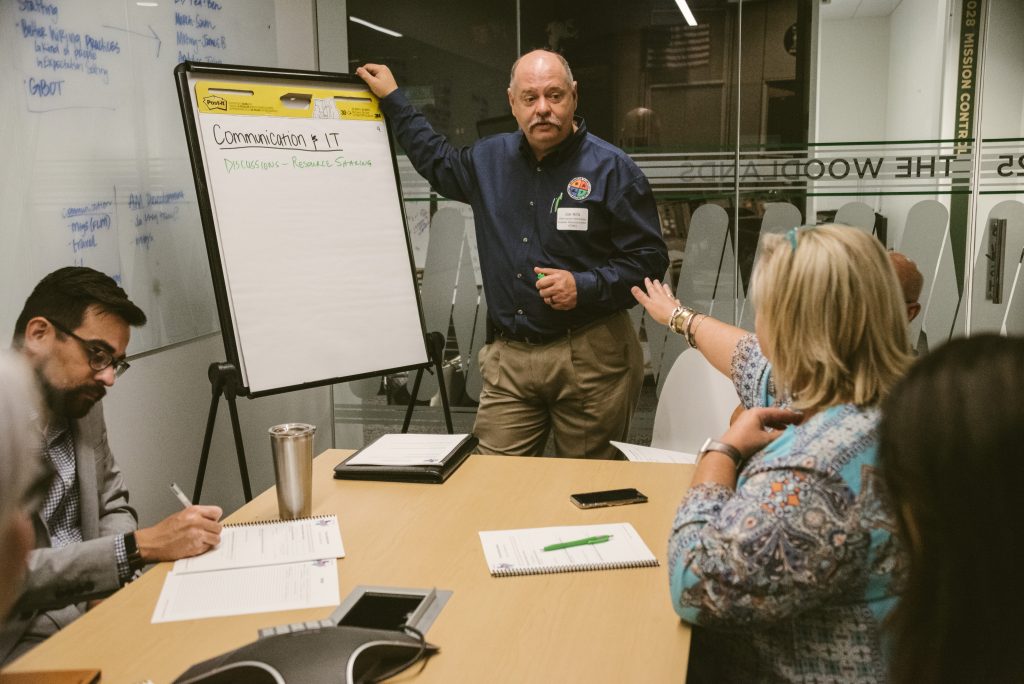There are tons of resources on nonprofit management from strategic planning to funder engagement. Within these resources, we often leave out an essential topic: is our nonprofit ready for a prompt response during a disaster?
In the dynamic and unpredictable world of today, disaster resilience must be a focal point for all nonprofit leaders. Resilience is not merely a buzzword; it signifies the capacity to adapt, organize, and react with intent after an unforeseen disaster.
Here are five questions we believe every nonprofit should ask now.
What type of disaster is most likely to affect us?
Not every city or region is prone to the same types of disasters. Prioritize action at your organization by identifying the type of event most likely to occur in your area. For instance, the most common disasters impacting Texas communities include tornadoes, hurricanes, flash floods, earthquakes, wildfires and drought.
Next, consider the primary hazards and their impact on your work. For example, if you serve a population that is largely senior in age, consider that many already do not have access to transportation. During a disaster, the impact of these limitations in mobility may be exacerbated. Develop a plan to address this need under extraordinary circumstances. In this same vein, consider what role(s) your nonprofit is uniquely positioned to help with during a disaster. Do you have the ability to have a skeleton crew for your work and have updates pushed out regularly on social media? Discuss this with your full team and ask how the organization can show up in unique ways.
Do we know our key contacts—including our county judge, emergency manager, and other social change leaders— that play an active role in disasters?
Your nonprofit can forge strong partnerships with emergency managers in blue skies, so that we can bring the two spheres of expertise together to plan an adequate and inclusive response for the whole community, including the people you serve. Do you know your local Volunteer Organizations Active in Disaster (VOAD) and/or Community Organizations Active in Disaster (COAD)? A COAD is a network of community organizations, businesses, nonprofits and individuals working together to plan community responses to a variety of emergency and disaster situations.
Both VOADs and COADs work to reduce the duplication of services and other inefficiencies that occur during times of disaster. Often, these groups may hold educational and networking sessions. Key areas of their work include planning, coordinating, and implementing disaster recovery resources. Forming relationships and getting to know their primary functions is very helpful before a disaster situation.
Do we need to implement a Disaster Response Plan?
The short answer is “yes,” but what type of plan will be most helpful to your organization? To get to the answer, consider what function of your nonprofit will be most deeply impacted. What services will the community turn to your organization for, and how will you meet those needs during a disaster? Will you be delivering direct service, raising funds on behalf of others, or temporarily expanding areas of an existing program to accommodate greater need? In addition to helping others, ensure that you are prepared to perform essential business functions such as payroll and critical client services.
If you foresee increased activity around giving and philanthropy, consider this: most disaster giving happens in the first six weeks when media coverage is high, but quickly drops off when the news cycle moves on. To prepare in the best way, decide whether your organization will take donations (both cash, stock, and in-kind) and how will you acknowledge the gifts. How will funds be distributed afterwards?
In the immediate aftermath of a major disaster, there will be a dearth of information while needs within your target population could be greater than ever. Thus, give yourself time now to think through the communications function. Start with these questions:
- What is the ideal workflow to develop a crisis response narrative?
- What is your role in interfacing with the media in preparation for a disaster? Do you have the resources internally to participate in interviews? If your organization expects press engagement, make a plan for who will support behind-the-scenes with collecting data and crafting key messages and who will be interacting directly with the media.
How do we begin to build a ‘culture of preparedness’?
Answers to the previous questions will help identify areas of organizational focus after a disaster. With this information, you can begin to plan what programmatic functions will likely be expanded after a disaster event. With this in mind, consider how to train and educate staff to complete their roles. Are there Emergency Management meetings that we should attend? Some examples may include local emergency management trainings and exercises, VOAD/COAD meetings, trainings with Texas Division of Emergency Management, and Community Emergency Response Team (CERT) programs.
Building out a culture of preparedness requires that you review your internal capacity. Identify your existing strengths within the organization. After a disaster, you may need to shift roles for some staff. Identify the individual employees and teams that are likely to take on additional work and determine capacity gaps. Where are areas where you should cross-train teams? Remember to focus on the people not just the plan and infrastructure.
How can we mobilize volunteers during a time of crisis?
In what ways can volunteers play a role in ecosystem recovery? If you have an existing pool of active volunteers, consider if there is an easy tie-in to disaster response, even for virtual participation. Volunteer interest immediately following a disaster is high, but what happens after public attention wanes? Will there be volunteer needs months after the disaster? For volunteer needs in Texas, the VolunteerTX.org site is a great resource, where you can search for opportunities by activity type and location. You can preemptively research if you have a local Volunteer Center or Volunteer Connector Organization, which often serves as the contact point for local and national volunteer organizations, connecting Individuals with local opportunities.
Do not underestimate the power of social media alerts and online information sharing. There may be certain requests for particular donation items or foods after a disaster. Invoking the help of your existing volunteer network to share these requests can be deeply effective.
Nonprofits’ greatest strengths are our community-facing work as well as our collective numbers. With more than 130,000 nonprofits in Texas, our sector influences every community, maintains close social ties with local stakeholders, and understands the latest socio-political issues. Disaster response is a topic of increasing importance in today’s world that demands our attention. Since nonprofits possess a first-hand understanding of a community’s challenges, nonprofit leaders need to reflect on how to best leverage their knowledge and resources to respond after a disaster event.
At OneStar, we have seen how iteratively conceptualizing our role has allowed us to more effectively respond to disasters. We hope these questions ignite dialogue and reflection on the potential impact on your work should disaster strike.
 Michelle Vryn
Michelle Vryn
Chief Development Officer
OneStar

